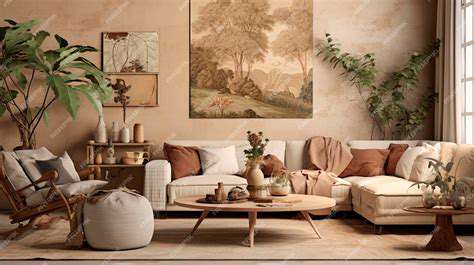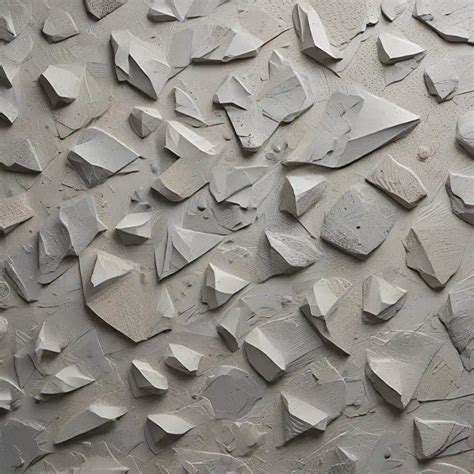How to style a home with rustic wooden furniture
Choosing the Right Rustic Wooden Furniture Pieces
Understanding the Rustic Aesthetic
Rustic furniture embodies warmth through organic imperfections and textures that whisper of campfires and mountain cabins. This isn't about manufactured distress, but celebrating wood's natural journey - knots become focal points, saw marks tell stories. The magic happens when sunlight hits uneven grain patterns, casting shadows that change throughout the day.
Authentic rustic design embraces structural honesty - joinery stays visible, wood retains its natural edges. Stone elements should look quarried rather than polished, with iron accents showing the hammer marks of a blacksmith's craft.
Considering Your Home's Existing Design
Take inventory of your space's architectural bones before selecting furniture. Exposed ceiling beams? That calls for chunky, squared-off furniture silhouettes. Smooth drywall throughout? Consider pieces with subtle curvatures to soften the space. The most successful rustic interiors create dialogue between furniture and architecture.
For homes with industrial elements, try a live-edge walnut slab floating on iron hairpin legs. In minimalist spaces, let one dramatic rustic piece (like a cathedral-door-turned-dining-table) serve as the organic counterpoint to clean lines.
Selecting the Right Wood Types
Wood selection impacts both aesthetics and maintenance. Reclaimed barnwood offers unparalleled character - look for pieces retaining original paint flecks or square nail holes. These historical markers add authenticity that can't be replicated. For contemporary rustic, sustainably harvested white oak develops a beautiful silver patina over time.
Consider seasonal movement - wide-plank pine tabletops may develop small cracks during dry winters (part of the charm), while quarter-sawn white oak remains remarkably stable. Always ask about the wood's origin story and drying process.
Choosing Furniture Pieces for Different Spaces
In gathering spaces, prioritize comfort alongside aesthetics. A massive trestle table invites lingering meals, while a chunky console behind the sofa provides both display space and structural weight. Bedrooms benefit from the grounding presence of a four-post bed crafted from whole logs - the vertical lines mimic forest trees.
Don't overlook functional pieces - a blanket chest at the foot of the bed serves as both seating and storage, while a pie-safe cabinet in the dining room adds rustic charm while keeping dishes accessible.
Incorporating Natural Elements
Complement wood furniture with other organic materials - a chiseled stone side table, hand-thrown ceramic lamps, or a cowhide rug. These elements should feel gathered rather than matched, as if collected during woodland walks. Display interesting branches, geodes, or antlers as natural sculpture.
Accessorizing with Natural Textiles
Layer textiles with visible weave structures - nubby linens, undyed wool throws, and rag rugs with irregular patterns. The best rustic textiles improve with age, developing softness and character through use. Mix in vintage grain sack pillows or a well-worn leather chair to add patina.
Maintaining a Balanced Space
Avoid the log cabin overload effect by introducing modern elements - perhaps a sleek metal floor lamp or minimalist artwork. The tension between rough and refined creates visual energy. White walls can provide necessary breathing room for substantial wood pieces, while black metal accents ground the organic forms.
Incorporating Natural Materials and Colors

Sustainable Design Choices
When selecting materials, consider their entire lifecycle. Reclaimed wood not only prevents deforestation but often comes from old-growth trees with tighter grain patterns. Salvaged materials carry embodied history that new products can't replicate. Cork flooring offers renewable warmth underfoot, while bamboo provides rapid-renewal structural options.
Look for local materials to reduce transportation emissions - fieldstone from nearby quarries, clay tiles from regional manufacturers. These choices create authentic connections to place while minimizing environmental impact.
Biophilic Design Principles
Humans instinctively respond to natural materials - our heart rates slow when touching wood, we feel comforted by stone's permanence. Incorporate these elements at eye level where possible - a live-edge shelf at desk height, a stone fireplace surround at seating level. Even small touches matter - a walnut drawer pull feels warmer than plastic.
Create material conversations - pair rough-sawn cedar walls with smooth river rock in the bathroom. The contrast heightens awareness of each material's unique qualities while creating sensory richness.
Environmental Impact Reduction
Prioritize materials requiring minimal processing - unstained wood, unglazed tile, unfinished metals. Each processing step consumes energy and often introduces chemicals. For countertops, consider soapstone or zinc that develop patina rather than requiring sealants.
Invest in quality that lasts - a solid wood door will outlast multiple fiberboard versions. Look for joinery techniques (dovetails, mortise-and-tenon) that allow for future repairs rather than disposable construction.
Aesthetic Value and Sensory Experiences
Natural materials engage multiple senses simultaneously - the citrus scent of freshly cut cedar, the satisfying click of marble chess pieces, the way linen curtains filter light. Design for these multisensory experiences by leaving wood unfinished where touch matters (chair arms, handrails) and using materials that change with use (copper that develops verdigris).
Celebrate material imperfections - the mineral streaks in marble, the color variations in hardwood. These flaws create visual rhythm and authenticity that uniform synthetics can't match.
Cost-Effectiveness and Durability
While premium initially, quality natural materials often prove cheaper over decades. A slate roof may last a century, hardwood floors can be refinished multiple times, and stone walls require no maintenance. Calculate cost per year rather than just initial outlay - heirloom-quality pieces become family treasures.
Cultural Significance and Heritage
Research regional building traditions - perhaps your area has a history of chestnut barns or oyster shell concrete. Incorporating these materials honors local history while creating meaningful design. Visit salvage yards to discover architectural elements with provenance - church pews reconfigured as dining benches, factory pulleys turned into light fixtures.
Support craftspeople keeping traditional techniques alive - a blacksmith forging hardware, a cooper making wooden buckets. These artisanal touches add layers of authenticity that mass-produced items lack.
Layering Textures and Patterns for Depth and Interest

Exploring the Depth of Visual Interest
Texture layering works like musical harmony - rough corresponds to bass notes (grounding the composition), smooth acts as midrange, and glossy finishes provide the treble. A successful room contains this full spectrum, perhaps with a nubby wool rug (bass), linen upholstery (mid), and mercury glass accessories (treble).
Vary texture scales - large (a shaggy throw), medium (basketweave pillows), small (a finely woven lampshade). This creates rhythm without overwhelming the eye.
Choosing Complementary Textures
Create texture bridges - a leather chair near a wood table shares warm tones but contrasts smooth vs. grainy. Juxtapose matte and reflective surfaces - perhaps a waxed concrete floor under a glossy lacquered cabinet. The eye delights in these subtle tensions.
Incorporate surprise textures - the cool smoothness of alabaster lamp amidst rough textiles, or the unexpected softness of velvet pillows on a rustic wooden bench. These moments create design intrigue.
Harmonizing Patterns with Textures
Let texture substitute for pattern where possible - a deeply wire-brushed wood grain provides visual interest without competing prints. When using patterns, vary their origins - a geometric kilim rug plays nicely against organic floral drapery if color-linked.
Scale patterns thoughtfully - large-scale prints work best on big surfaces (upholstery, area rugs), while tiny patterns suit accessories. Medium patterns can bridge the two when used on mid-sized elements like throw pillows.
Understanding the Visual Hierarchy
Establish texture focal points - perhaps an extraordinary rough-hewn mantelpiece or an intricately carved headboard. Allow secondary textures to recede - smooth walls as a backdrop, simple wool curtains framing a view. This creates breathing room amidst rich textures.
Use texture to guide movement - a runner with directional weave leads the eye down a hallway, while a circular rug's radiating pattern centers a seating area. Texture can subtly organize space.
Applying the Principles to Different Media
In table settings, combine matte stoneware with gleaming flatware and textured linens. For holiday decor, layer prickly evergreen garlands over smooth velvet ribbons near glittering ornaments. Even a bookshelf benefits from texture mixing - leather bindings, matte paperbacks, metallic bookends.
In wardrobe building, pair cable-knit sweaters with sleek trousers or a tweed jacket with a silk blouse. These combinations create dimensional style that feels intentional yet effortless.
The Importance of Color Coordination
Texture reads differently in various lights - a nubby fabric appears darker in recessed lighting but reveals depth in sunlight. Test textures in their intended locations at different times of day. A color that works flat may need adjustment when heavily textured.
Use texture to modify color perception - rough surfaces absorb light (making colors appear deeper), while smooth ones reflect (brightening hues). This knowledge helps balance a color scheme across varied materials.

- Modern vs traditional wooden furniture design ideas
- How to clean wooden furniture without damaging the finish
- How to decorate your home with minimalist wooden furniture
- Why cherry wood furniture is perfect for timeless elegance
- What to look for when buying wooden furniture online
- Why solid wood furniture is the best investment for your home
- How to choose a wooden chair for maximum comfort
- How to clean and care for wooden dining tables
- How to create a traditional home style with wooden furniture
- How to decorate your living room with wooden furniture
- How to create a rustic kitchen with wooden furniture
- The top benefits of choosing solid wood furniture for your home